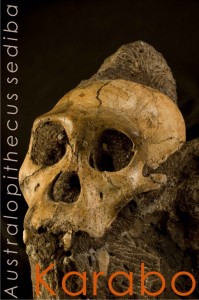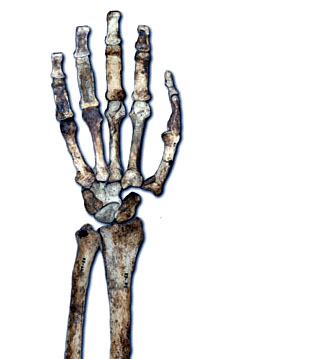by Richard William Nelson | Sep 18, 2011
 In the journal Science, the September 9 edition, a collection of reports generated a storm of controversy on the evolutionary status of Australopithecus sediba. Nicknamed Karabo, meaning “answers,” the fossils have emerged as the latest human ancestor candidate.
In the journal Science, the September 9 edition, a collection of reports generated a storm of controversy on the evolutionary status of Australopithecus sediba. Nicknamed Karabo, meaning “answers,” the fossils have emerged as the latest human ancestor candidate.
While last week’s topic focused on Karabo’s transitional links, this week examines the dating of these two remarkable fossilized skeletons recovered from the Malapa site in South Africa.
The Karabo dating surprised the investigators.
Continue Reading
by Richard William Nelson | Sep 12, 2011
 The Australopithecus sediba saga intensified last week with a new series of reports published in the journal of Science. The journal is the official weekly publication of the American Association for the Advancement of Science, AAAS.
The Australopithecus sediba saga intensified last week with a new series of reports published in the journal of Science. The journal is the official weekly publication of the American Association for the Advancement of Science, AAAS.
Last week’s edition (cover pictured left) featured eight articles and news reports specifically on A. sediba, inflaming a flurry of speculations on the human “missing link.”
This last week was the second Science edition to focus on human evolution findings in South Africa.
Continue Reading
 In the journal Science, the September 9 edition, a collection of reports generated a storm of controversy on the evolutionary status of Australopithecus sediba. Nicknamed Karabo, meaning “answers,” the fossils have emerged as the latest human ancestor candidate.
In the journal Science, the September 9 edition, a collection of reports generated a storm of controversy on the evolutionary status of Australopithecus sediba. Nicknamed Karabo, meaning “answers,” the fossils have emerged as the latest human ancestor candidate.
 The
The 